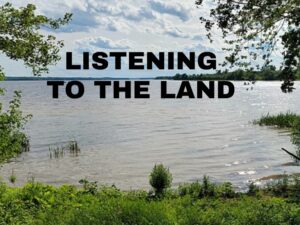How Big is the BP Oil Slick? Bringing the Scale of the Disaster Home
o gain some sense of the magnitude of the BP oil spill, an interactive map provided by the Toronto Star (http://www.ifitwasmyhome.com/) allows users to superimpose the spill onto their own home town.
This is a shocking experience. If you live in Halifax, for example, the area affected would be as big as the entire province of Nova Scotia.
BP initially used satellite images to estimate the leak’s growth at 5,000 barrels a day. Maps, like this one, based on satellite images only show the size of the surface oil slick. An even greater ecological disaster is building beneath the waves. Analysis commissioned by the US government indicates the well could be leaking anywhere between 12,000 and 25,000 barrels a day. As of June 7th BP reported that its new cap over the well was recovering 14,842 barrels a day. The company hopes to capture 20,000 barrels by the week-end of June 12-13.
Steve Werely, a professor of mechanical engineering at Purdue University, has analyzed BP’s video footage. He estimates oil is escaping at the rate of 95,000 barrels a day, nearly 20 times greater than the 5,000 barrels initially reported.
The Deepwater Horizon’s toxic oil discharges are commonly compared with the Exxon Valdez disaster, which spewed 257,000 barrels of oil into the waters off Alaska in 1989.
At the US government estimate of 25,000 barrels a day, the Gulf absorbs as much oil as the total discharged from the Exxon Valdez in just over 10 days. At Werely’s estimate of 95,000 barrels per day, BP’s well is spewing more oil than the Exxon ship every three days.
The Gulf of Mexico oil spill disaster challenges us to look more closely at the environmental and health impacts of large scale oil extraction operations in other parts of the world.
Nigerians say that the crude that has leaked into the lands and waters of the Niger delta is equivalent to an Exxon Valdez disaster each year for the past 50 years.
How about Canada? Toxic tailing ponds from tar sands mining operations now cover some 170 square kilometres. The water is so toxic that minnows die within 96 hours. 1600 ducks died when they landed on Syncrude’s pond in April 2008.
One of the most dangerous contaminants in tar sands tailings is naphthenic acid. Repeated exposure to naphthenic acid can cause liver problems and brain haemorrhaging. Studies reveal that these ponds are leaking into the groundwater and into the Athabasca River. People living in Fort Chipewyan, a First Nations community downstream from the tar sands, have experienced higher than expected rates of cancer, some of them rare, and they would like to know if there is a link between this and pollution from the tar sands.
These ponds already hold 843 million cubic metres of toxic waste and could grow to 1.1 billion cubic metres by 2020. World-renowned water expert Dr. David Schindler describes the tar sands as a “massive oil spill in slow motion.” Schindler says that if a dike failed “the world would forever forget about the Exxon Valdez.” On March 30, 2010 Dr. Schindler presented scientific evidence to the House of Commons Environment Committee showing that tar sands operations are discharging harmful substances.
Watching the disaster unfolding in the Gulf of Mexico, Canadians are asking more questions about what it would mean to have such toxic material leaking into our waters. This issue is particularly important for Indigenous communities living downstream from the tar sands. KAIROS supports long-standing calls by these communities and environmental groups for independent studies, funded by the Alberta and federal governments, on the cumulative impacts of the tar sands development, especially on health, water and ecosystems. These studies must involve Indigenous people and be accessible to them and the broader public.












